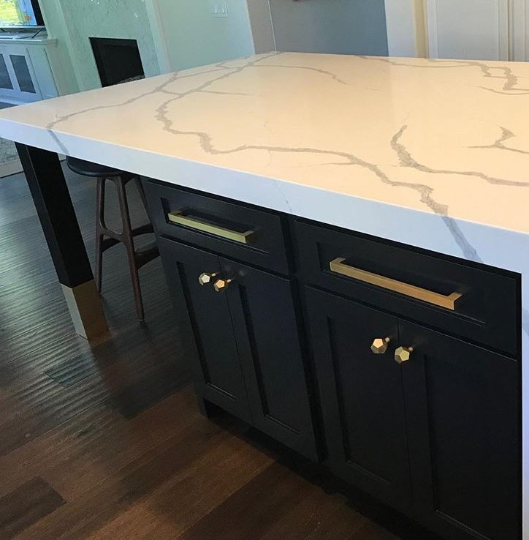Attain a Sophisticated Look Making Use Of Ornate Legs For Kitchen Island Designs
Attain a Sophisticated Look Making Use Of Ornate Legs For Kitchen Island Designs
Blog Article
An Overview to Picking the Perfect Legs For Cooking Area Island for Your Home
Choosing the excellent legs for your kitchen area island is a nuanced decision that influences both the functionality and aesthetic allure of this main room. As you consider these aspects, it becomes apparent that the appropriate legs can transform not only the look of your kitchen however also its functionality for years to come.

Understanding Cooking Area Island Legs
When selecting legs for a kitchen area island, it's vital to understand their aesthetic and useful roles in the overall layout. The legs work as a critical support system, guaranteeing stability and sturdiness for the island, which commonly works as a work area, eating area, or gathering place. The selection of material and building and construction method should be robust adequate to hold up against day-to-day use and possible wear.
Along with their architectural duties, legs contribute substantially to the island's aesthetic charm. They can improve the cooking area's design, whether through typical, modern, or diverse layouts. The elevation and percentage of the legs are also critical considerations; they should balance with the island's counter top height while making sure comfortable seating for those using the space.
Furthermore, the leg design can affect the overall circulation of the cooking area. Open, ventilated leg designs can produce a sense of lightness, while solid, considerable legs may convey an extra grounded and stable aesthetic - Legs For Kitchen Island. Comprehending these functional and aesthetic aspects will certainly guide homeowners in making educated options that enhance their kitchen area's style and improve its functionality
Popular Styles and Materials
The selection of legs for a cooking area island includes a variety of popular designs and products, each offering distinct qualities that can enhance both functionality and aesthetics. Traditional legs normally exhibit luxuriant details and workmanship, enhancing traditional kitchen area styles.

Elevation and Stability Factors To Consider

The legs of the kitchen area island ought to provide appropriate support, making certain that the framework can endure day-to-day usage without moving or tottering. Material option plays a considerable role in security; metal legs, for instance, have a tendency to use greater toughness contrasted to timber.
Matching Your Kitchen Area Aesthetic
Choosing the appropriate legs for your kitchen island goes beyond functionality; it also plays a substantial function in the total visual of the room (Legs For Kitchen Island). When choosing legs, consider the design style of your kitchen.
Legs that enhance or comparison with your island's surface and surrounding kitchen cabinetry can produce visual consistency or striking focal points. Additionally, consider the coating of the legs; matte, glossy, or distinctive coatings can substantially impact the total feeling of the kitchen.
Installment and Upkeep Tips
Mounting kitchen area island legs calls for cautious attention to information to guarantee both security and visual appeal. Make use of a stud finder to locate wall studs if you are attaching the legs to a wall or making use of braces for included assistance.
When safeguarding the legs, utilize top notch screws and, if necessary, wood glue for extra stamina. For steel legs, guarantee that you are making use of suitable supports and tools to prevent damage to your floor covering. It is advisable to look for levelness after installment, making adjustments as needed to stay clear of wobbling.
Maintenance is similarly crucial for long life - Legs For Kitchen Island. Regularly inspect the legs for any type of indications of wear or loosening, especially in high-traffic areas. Tidy the legs with a suitable cleaner, staying clear of unpleasant products that may scratch the surface. For wooden legs, take into consideration applying a timber conditioner regularly to maintain their finish. By complying with these setup and upkeep suggestions, you can make certain that your cooking area island legs continue to be both useful and visually attractive.
Final Thought
In right here verdict, choosing the ideal legs for a kitchen area island necessitates careful factor to consider of elevation, stability, and visual compatibility. Eventually, thoughtful leg choice plays a crucial function in raising both the practicality and design of the kitchen area room.
When picking legs for a kitchen area island, it's vital to comprehend their aesthetic and practical roles in the total style. Open, ventilated leg styles can produce a feeling of lightness, while strong, substantial legs may share an extra grounded and secure aesthetic. The legs of the kitchen area island must supply adequate support, making see it here sure that the framework can stand up to daily usage without tottering or shifting.Installing kitchen island legs calls for careful interest to information to make certain both stability and visual appeal.In conclusion, choosing the proper legs for a kitchen island requires careful factor to consider of elevation, stability, and aesthetic compatibility.
Report this page